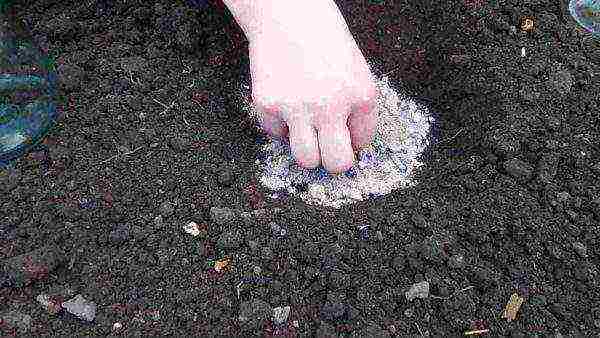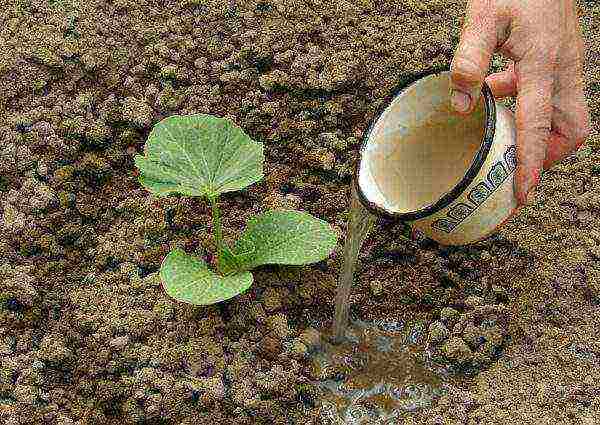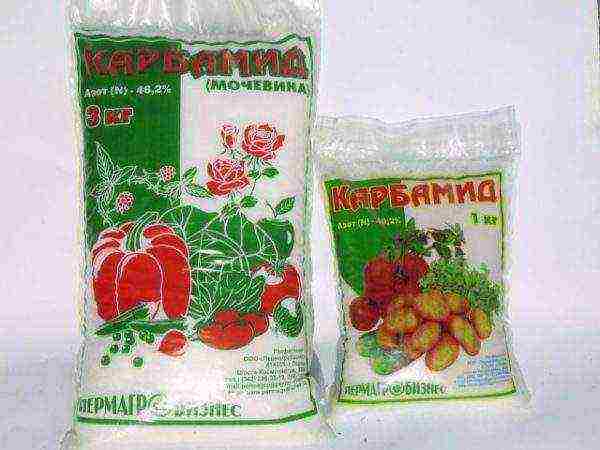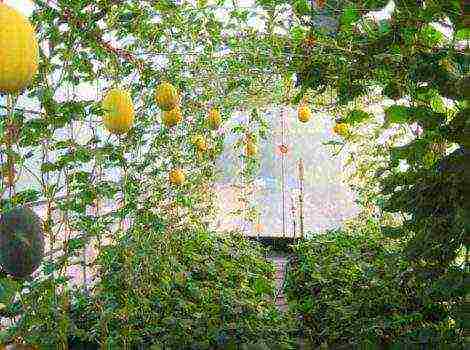Content
- 1 Rules for planting zucchini and caring for them in the open field
Rules for planting zucchini and caring for them in the open field
This early ripening culture bears fruit throughout the summer. The plant is unpretentious, but requires care. Planting and cultivation is carried out in open beds; for an early harvest, seedlings are planted in greenhouses. In this article, we will look at how to properly plant a zucchini in open ground, as well as how to care for it at home and what to feed it during the entire growing season.
Dates for planting zucchini seeds in open ground
Start planting seeds in the ground when the soil warms up to +12 degrees, not earlier than mid-May. In cold ground, seeds will not germinate, will rot and die. Therefore, disembarkation is left until warmer weather. With late night frosts, tender sprouts will freeze. Planting zucchini seeds for seedlings is carried out at will, since the fruits have time to ripen and are planted immediately with seeds to the depth of the soil.
You can do this at the beginning of May (for the middle lane), after spilling the hole with warm water. The sowing site is covered with a plastic 5-liter transparent canister with a cut-off neck. It turns out a mini greenhouse for each plant. Do not forget that planting vegetables in the ground and in a greenhouse or greenhouse is significantly different.
After the onset of stable heat and the absence of night frosts, the canister is removed and the seeds can be grown further.
Proper preparation of beds and planting seed at home
The best way to prepare the ridges is in the fall. When digging, they add rotted manure or compost, a full range of fertilizers - superphosphate, potassium salt, ammonium nitrate. If necessary, they are preliminarily limed.
Where and which side to plant seeds? Zucchini can also be sown on compost heaps. Loose, humus-rich soil is a good place for this culture.
It is enough to loosen a bed prepared in autumn in the spring and make holes in it. The zucchini bush is voluminous, planted at a distance of 0.5-0.8 meters. The seeds are treated with a 1% solution of potassium permanganate, ash or nitroammofoska, holding for 20 minutes. Then washed with water. This will protect the seeds from diseases and ensure friendly germination.
Place 2-3 seeds in the hole, in case one does not come up. When shoots appear, leave one seedling, pinch off the rest.

Care during the growing season
Zucchini loves warmth and moisture. In dry weather, watered once a week with water, no colder than +22 degrees. With massive growth of fruits - every three days. Up to two liters of water are poured under each plant. Do not watered before harvesting so that the taste is not affected.
A large bush and large fruits require a lot of nutrition. Top dressing begins to be applied after the appearance of true leaves and continues the entire period of fruiting. Fertilizers are well applied in liquid form. Most of all he loves organic. Foliar dressing has a positive effect on the development of a vegetable. By spraying the bush every 10 days with a fertilizer solution, you can significantly increase the yield.
Weeds are only dangerous until they grow in the future, they simply will not be able to develop under a spreading crown.

How can you feed and fertilize zucchini?
What fertilizers are used for the plant, we list them:
- Mineral.
- Organic.
- Fertilizers from improvised means.
Mineral fertilizers
For the development of this culture, a complete complex fertilizer is used in the following composition: 1 tbsp. spoon of potassium sulfate, double superphosphate, urea dissolves in 10 liters of water. After complete dissolution, watered under the root system by 1.5 liters per plant.
Nitrogen cause the growth of the green mass of the plant. Used in spring and summer. Closer to autumn, their use is undesirable. These are urea, ammonium, calcium and sodium nitrate, ammonium sulfate.
Phosphoric help fruits ripen faster, reduce the growing season. These are superphosphate, double superphosphate, phosphoric flour.
- Superphosphate granular fertilizers for feeding zucchini
- Granular superphosphate for adding to soil
- Soil diagram before and after adding fertilizer
Potash increase the resistance of plants to lack of moisture and heat. Increases resistance to diseases and pests. Distinguish between potassium sulfate, potassium chloride, potassium salts.
Magnesium and iron-containing ones include magnesium oxides, boron, and iron. They increase the yield of fruits and their quality. Magnesium contributes to soil deoxidation. It is better to fertilize in the fall according to a certain scheme, as indicated in the instructions.
Microadditives are very important for the development of plants: boric, molybdenum, manganese, copper. They require a small amount, they are added to the complex.

Organic fertilizers
Organic - an important component in the nutrition of zucchini. They are composed of the main elements - nitrogen, phosphorus, potassium, trace elements, vitamins. All this is easy to digest. So you can feed the zucchini at any time.
Manure. Organics of animal origin. Not a very nutritious top dressing. Improves soil structure. The simultaneous application of mineral fertilizers and manure improves the assimilation of mineral fertilizers.
Humus. Rotted manure. Improves the condition and composition of the soil. Assimilated after application under the bush in a short time.
Compost. It is obtained after the decomposition of vegetable and kitchen waste. Its ripening lasts at least three years. Used for feeding, mulching.
Bird droppings... Contains all the necessary ingredients, the most valuable manure fertilizer. It takes time to be ready for application under crops. When fresh, it is caustic and can burn roots and leaves.
Peat... Makes the soil lighter, nourishes. Not all peat is healthy. Sour peat is used in composts.

Other organic fertilizers and fertilizing
Grass and leaves, yeast, ash, food waste are used for nutrition.
Green grass, nettle is especially good, is soaked in a barrel of water, kept for 10-15 days, and get herbal infusion. Strain it and get a fertilizer that is easily absorbed in a short time.
Green herbal dressing is obtained by digging and embedding in the ground grown in a garden bed.
Folk infusion of wood ash contains many trace elements, reduces the acidity of the soil. Does not contain nitrogen, it must be added.
Pests and the fight against them
Zucchini are subject to the following diseases:
- White rot
- Gray rot.
- Powdery mildew.
- Fusarium wilting.
White and gray rot covers leaves, stems and ovaries with bloom, they soften and dry out. It's a fungus. Appears in cold, wet weather in dense plantings. Spores persist in the ground. To destroy the disease, spray with copper sulfate, sulfuric zinc, urea solution. Do not thicken the planting, water with warm water.
Powdery mildew. The leaves are affected first, then the disease damages the whole plant. Absorbs plant nutrition, reduces yield. It spreads with temperature fluctuations, excess nitrogen. It is treated by spraying with colloidal sulfur, manure infusion, potassium permanganate solution.
Fusarium wilting affects the roots. With further development, it passes to the stem, and it dies. It can only be destroyed by completely replacing the soil.
All these diseases persist on plant debris and in the soil. Their appearance can be prevented by careful preparation of the ridges, burning plant residues, post-harvest processing, and observing crop rotation.
- White rot
- Powdery mildew
- Gray rot
- Fusarium
Insect pests for squash:
- Melon aphid.
- Spider mite.
- Whitefly.
Larvae melon aphid hibernate on plant debris, multiply rapidly in spring. They damage stems and leaves, after which they dry out. Autumn cleaning of ridges, burning of plant debris will help to prevent the invasion of insects. In summer, plants are sprayed with infusion of hot peppers, onions, potato tops, and powdered with tobacco dust.
Spider mite small invisible pest. Occurs in the lower part of the leaf. Causes leaf spotting and drying out. Control measures are the same as with aphids.
Whitefly forms a sticky sugar coating on the back of the leaves. This is the environment for the formation of various fungi and plant diseases. The pest can be washed off with water, not allowing them to remain on the ground after that. In case of a large number of insects, treat the soil after harvesting with the Komandor insecticide.
Harvesting and storage
The most delicious and healthy are green fruits up to 25 cm long. They have a thin skin and small unripe seeds. By removing zucchini on time, we help the formation and growth of new ovaries. In this case, we will have fresh greens all summer. From the end of August, we begin to make a blank for storage for the winter. We harvest fruits with hard skin and a long stalk for better storage. We collect the harvest until the frost.
Zucchini is an early ripening culture, we get the first harvest 20 days after flowering. An early harvest allows you to get fresh vitamins already at the beginning of summer. Their wide range of uses makes zucchini a popular crop among gardeners.


